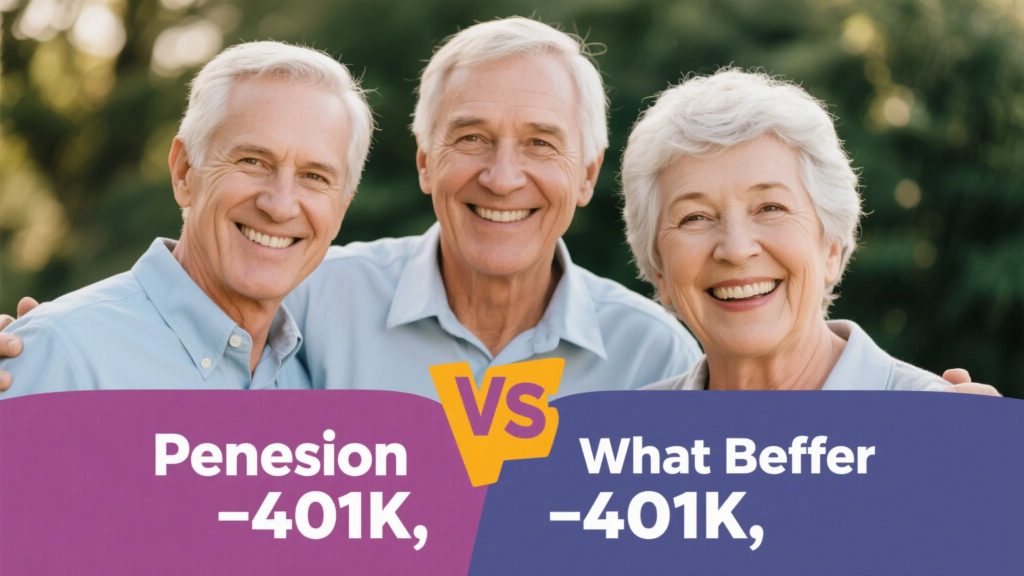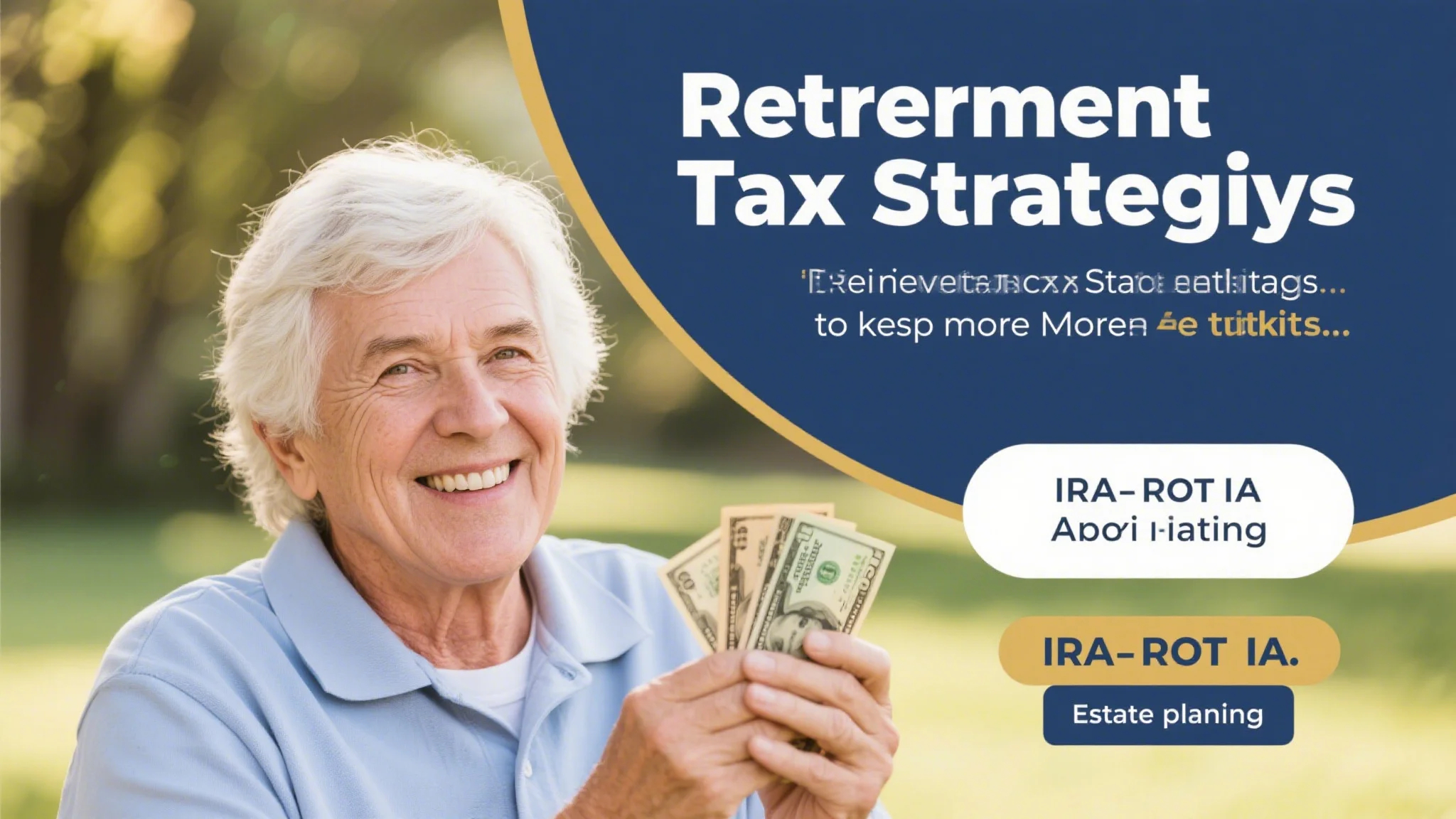
Pension vs 401k: What’s Better for Your Retirement?
Understanding the Fundamental Differences
The pension vs 401k debate highlights two fundamentally different approaches to retirement planning. Traditional defined benefit pension plans provide guaranteed lifetime income based on salary history and years of service, while 401(k)s are defined contribution plans where retirement security depends on individual contributions and investment performance. Pensions offer stability but less control, whereas 401(k)s provide flexibility but require more personal responsibility for investment decisions.
Younger workers often prefer 401(k)s for their portability between jobs and potential for higher returns, while those valuing stability might prefer the predictable income of pensions. The shift from pensions to 401(k)s in private industry over recent decades has transferred investment risk from employers to employees, fundamentally changing how Americans must approach retirement planning. Understanding these differences is crucial for making informed decisions about your financial future.
Evaluating Retirement Savings Vehicles
When considering the best retirement savings plans, it’s important to recognize that few workers today have a choice between pensions and 401(k)s – most must work with what their employers offer. Public sector employees and some union workers often still have access to pensions, while most private sector workers rely primarily on 401(k)s. Those fortunate enough to have both should coordinate them strategically, using the pension as a base income layer while the 401(k) provides supplemental funds.
Hybrid plans like cash balance pensions attempt to combine features of both systems, providing guaranteed returns on account balances that can be taken as lump sums or annuities. For those with only 401(k) options, maximizing contributions and taking full advantage of employer matches becomes essential. The key is understanding your specific plan’s features and limitations to develop the most effective savings strategy for your situation.

Navigating Account Transitions
Understanding retirement plan rollover options becomes crucial when changing jobs or retiring. Pension recipients often face choices between lump-sum payouts and annuity payments, while 401(k) holders must decide whether to leave funds in old employer plans, roll to new plans, or transfer to IRAs. Each option has distinct tax implications and consequences for future flexibility that require careful consideration.
Direct rollovers between similar account types avoid tax penalties, while conversions from traditional to Roth accounts trigger taxable events. The five-year rule for Roth accounts applies separately to each conversion, creating potential complications if not properly tracked. Professional guidance is particularly valuable when dealing with company stock in retirement plans, which may qualify for special tax treatment under Net Unrealized Appreciation (NUA) rules.
Tax Optimization Strategies
Smart retirement tax strategies differ significantly between pension and 401(k) recipients. Pension income is generally fully taxable, while 401(k) withdrawals are taxed as ordinary income but offer more control over timing. Strategic Roth conversions during low-income years can be particularly advantageous for 401(k) holders wanting to reduce future tax burdens, while pension recipients might focus more on managing provisional income to avoid triggering taxation of Social Security benefits.
Required Minimum Distributions (RMDs) now begin at age 73 (under current law) for both traditional 401(k)s and IRAs, but pensions have no RMD requirements. This makes Roth accounts particularly valuable for those who don’t need all their retirement savings immediately. Qualified Charitable Distributions (QCDs) from IRAs allow direct transfers to charities that satisfy RMD requirements without counting as taxable income – a strategy unavailable to pension recipients.
Risk Management Approaches
Pensions and 401(k)s approach risk completely differently. Pensions transfer all investment and longevity risk to employers (or pension insurance systems), while 401(k) participants bear these risks themselves. This fundamental difference means 401(k) investors must develop sophisticated investment strategies incorporating proper asset allocation, regular rebalancing, and gradual risk reduction as retirement approaches.
Pension recipients don’t face sequence-of-returns risk – the danger of poor early returns depleting a portfolio prematurely – but they do face potential inflation risk if benefits lack cost-of-living adjustments. Those with 401(k)s must maintain emergency cash reserves and consider annuity options to create guaranteed income floors, while pension recipients might focus more on supplementing their stable income with growth-oriented investments.
Legacy Planning Considerations
Pensions and 401(k)s also differ significantly in how they handle wealth transfer. Traditional pension benefits typically end at death unless specific survivor options are selected during enrollment periods, while 401(k)s and IRAs can be left to heirs. The SECURE Act changed rules for inherited retirement accounts, generally requiring most non-spouse beneficiaries to empty accounts within ten years, making Roth conversions potentially more attractive for those wanting to leave tax-efficient inheritances.
Pension maximization strategies might involve selecting single-life options for higher payments while using life insurance to protect surviving spouses. Others choose period-certain options that guarantee payments for a set timeframe. Trusts can be named as beneficiaries of retirement accounts but require careful drafting to avoid accelerating distributions or creating tax problems – considerations that don’t apply to most pension structures.
Early Retirement Implications
The pension vs 401(k) decision takes on special importance for those pursuing early retirement. Many pension plans reduce benefits for early claimants, often imposing actuarial reductions of 4-6% per year before normal retirement age. Some public safety and military pensions allow full benefits after 20-25 years of service regardless of age, making them particularly attractive for early retirement scenarios.
401(k) holders pursuing early retirement must navigate penalty-free access strategies like Substantially Equal Periodic Payments (SEPP) or Roth conversion ladders. The Rule of 55 allows penalty-free 401(k) withdrawals at age 55 or older after leaving an employer, while IRA access generally requires waiting until 59½. Healthcare planning before Medicare eligibility at 65 becomes particularly crucial for early retirees regardless of income source.
Making the Right Choice for You
Ultimately, the pension vs 401(k) decision depends on personal circumstances including risk tolerance, career path, and retirement goals. Those valuing stability and simplicity might prefer pensions, while those comfortable with financial complexity and wanting more control might favor 401(k)s. Many Americans will need to work with whatever their employers offer, making it essential to understand how to optimize whatever retirement vehicles are available to you.
For those with access to both, thoughtful coordination can provide the best of both worlds – guaranteed income from pensions plus flexibility and growth potential from 401(k)s. Regular reviews with financial professionals can help ensure your strategy remains aligned with changing life circumstances, tax laws, and market conditions throughout your working years and into retirement.


